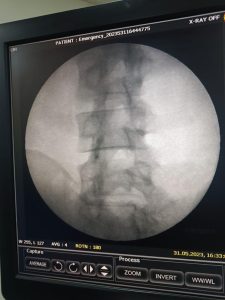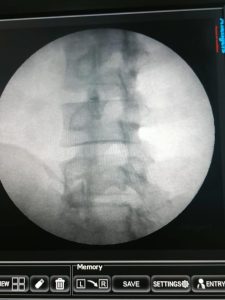Introduction
Arthritis of the facet joints is a common condition causing low back pain. Facet or zygapophyseal joints are a paired and diarthrodial joint and are the only synovial joints in the spine, with hyaline cartilage overlying subchondral bone, a synovial membrane and a joint capsule [1]. The joint space presents capacity of 1–2 mL [2]. Inflammation and degeneration of the facet joints are classically seen in cases of facet joint arthritis. This can cause chronic pain and reduce the quality of life for individuals affected by it. Traditional treatment options for facet joint arthritis include medication, physical therapy, and in severe cases, surgery. However, a promising alternative that has gained traction in recent years is Platelet-Rich Plasma (PRP) therapy. This innovative approach offers a safe and effective solution for pain management and tissue regeneration. In this blog, we will explore the concept of PRP treatment and its potential benefits for individuals with facet joint arthritis.
Understanding Platelet-Rich Plasma (PRP)
Platelet-Rich Plasma (PRP) is a regenerative therapy that utilizes a concentrated form of a patient’s own blood to stimulate the healing process. The procedure involves drawing a small sample of blood from the patient and then processing it in a centrifuge to isolate the platelet-rich plasma. These platelets are a source of various growth factors such as fibroblast growth factor (FGF), platelet-derived growth factor (PDGF), platelet-derived angiogenesis factor, transforming growth factor-beta TGF-β, PDGF, epidermal Growth factor, VEGF, hepatocyte GF, and IGF.[3]Due to this platelets play a crucial role in the body’s natural healing process as these factors and other bioactive proteins aid in tissue repair and regeneration.
The PRP Treatment Process
Once the PRP is prepared, it is injected directly into the affected facet joints under guided imaging, such as fluoroscopy or ultrasound, to ensure precise targeting. The growth factors and proteins present in PRP help reduce inflammation, promote tissue regeneration, and stimulate the production of new cells and collagen. The treatment process is minimally invasive, usually completed as an outpatient procedure, and requires minimal recovery time.
Benefits of PRP Treatment for Facet Joint Arthritis
- Pain Relief: Facet joint arthritis is primarily associated with chronic pain. PRP therapy has shown promising results in reducing pain and improving joint function. The growth factors in PRP can stimulate the healing process and provide long-lasting pain relief.
- Non-Surgical Approach: PRP treatment offers a non-surgical alternative to individuals who prefer to avoid invasive procedures or are not eligible for surgery. It provides an opportunity for pain management and tissue regeneration without the risks and potential complications associated with surgery.
- Tissue Regeneration: Facet joint arthritis often leads to degeneration and deterioration of the joint tissues. PRP treatment promotes tissue regeneration by enhancing the body’s natural healing mechanisms. It can potentially slow down the progression of arthritis and improve the overall joint health.
- Minimal Downtime: Compared to surgical interventions, PRP therapy has minimal downtime. Patients can resume their daily activities relatively quickly, avoiding the prolonged recovery period associated with surgical procedures.
- Few Side Effects: Since PRP therapy utilizes the patient’s own blood, the risk of allergic reactions or infections is minimal. The procedure is considered safe and well-tolerated, with minimal side effects reported.
Conclusion
Platelet-Rich Plasma (PRP) therapy presents a promising treatment option for individuals suffering from facet joint arthritis. This innovative approach harnesses the body’s own healing properties to alleviate pain, promote tissue regeneration, and improve joint function. Although further research is needed to establish the long-term effectiveness of PRP treatment for facet joint arthritis, initial studies and patient testimonials indicate positive outcomes. If you are considering PRP therapy, it is important to consult with a qualified healthcare professional who can assess your condition and determine if this treatment is suitable for you.


References
[1]Yahia LH, Garzon S. Structure on the capsular ligaments of the facet joints. Ann Anat. 1993;175(2):185–188. [PubMed] [Google Scholar]
[2]Datta S, Lee M, Falco FJ, Bryce DA, Hayek SM. Systematic assessment of diagnostic accuracy and therapeutic utility of lumbar facet joint interventions. Pain Physician. 2009;12(2):437–460. [PubMed] [Google Scholar]
[3]. Kolber MJ, Purita J, Paulus C, Carreno JA, Hanney WJ. Platelet-Rich Plasma: Basic Science and Biological Effects. Strength and Conditioning Journal. 2018;40(5):77-94. doi:10.1519/ssc.0000000000000402 [Google Scholar]





